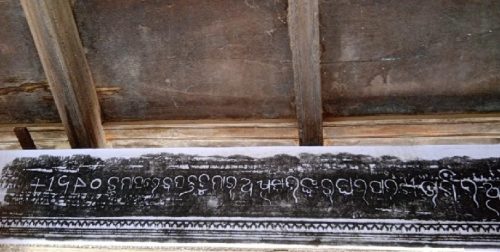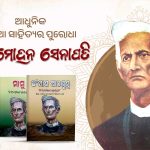In a significant discovery highlighting Odisha’s rich cultural legacy, two rare wooden inscriptions, engraved during the early 20th century, have been found in Paralakhemundi and Ranadevi of Gajapati district. History researcher Bishnu Mohan Adhikari deciphered these inscriptions in the presence of Archaeological Survey of India (ASI) officials on August 20, 2023. Wooden inscriptions are rare due to their vulnerability to weathering, making these well-preserved pieces an exceptional find.
One inscription was found at the old Rajaguru Mutt in Paralakhemundi. It was engraved in 1922 by Narayana Maharana and later preserved in the Radha Govinda temple, which was renovated by Sitakanta Rajguru, son of renowned epigraphist Satya Narayan Rajguru. Despite Rajguru’s extensive work deciphering inscriptions across India, he had not decoded this particular wooden engraving, which consists of three lines.
Another wooden inscription was found in a house built by Mohana Adhikari in Ranadevi during the 19th century. This house has historical significance tied to the construction of the Sri Radhakanta temple by Lalita Adhikarini in the 18th century. The family later relocated to Paralakhemundi in 1958.
These inscriptions are of particular interest as they provide insight into the use of the South Odisha dialect, ‘Ganjami Odia.’ Experts believe there may be more such wooden inscriptions, particularly in Paralakhemundi, where several wooden temples once stood.
In a significant discovery highlighting Odisha’s rich cultural legacy, two rare wooden inscriptions, engraved during the early 20th century, have been found in Paralakhemundi and Ranadevi of Gajapati district. History researcher Bishnu Mohan Adhikari deciphered these inscriptions in the presence of Archaeological Survey of India (ASI) officials on August 20, 2023. Wooden inscriptions are rare due to their vulnerability to weathering, making these well-preserved pieces an exceptional find.
One inscription was found at the old Rajaguru Mutt in Paralakhemundi. It was engraved in 1922 by Narayana Maharana and later preserved in the Radha Govinda temple, which was renovated by Sitakanta Rajguru, son of renowned epigraphist Satya Narayan Rajguru. Despite Rajguru’s extensive work deciphering inscriptions across India, he had not decoded this particular wooden engraving, which consists of three lines.
Another wooden inscription was found in a house built by Mohana Adhikari in Ranadevi during the 19th century. This house has historical significance tied to the construction of the Sri Radhakanta temple by Lalita Adhikarini in the 18th century. The family later relocated to Paralakhemundi in 1958.
These inscriptions are of particular interest as they provide insight into the use of the South Odisha dialect, ‘Ganjami Odia.’ Experts believe there may be more such wooden inscriptions, particularly in Paralakhemundi, where several wooden temples once stood.





